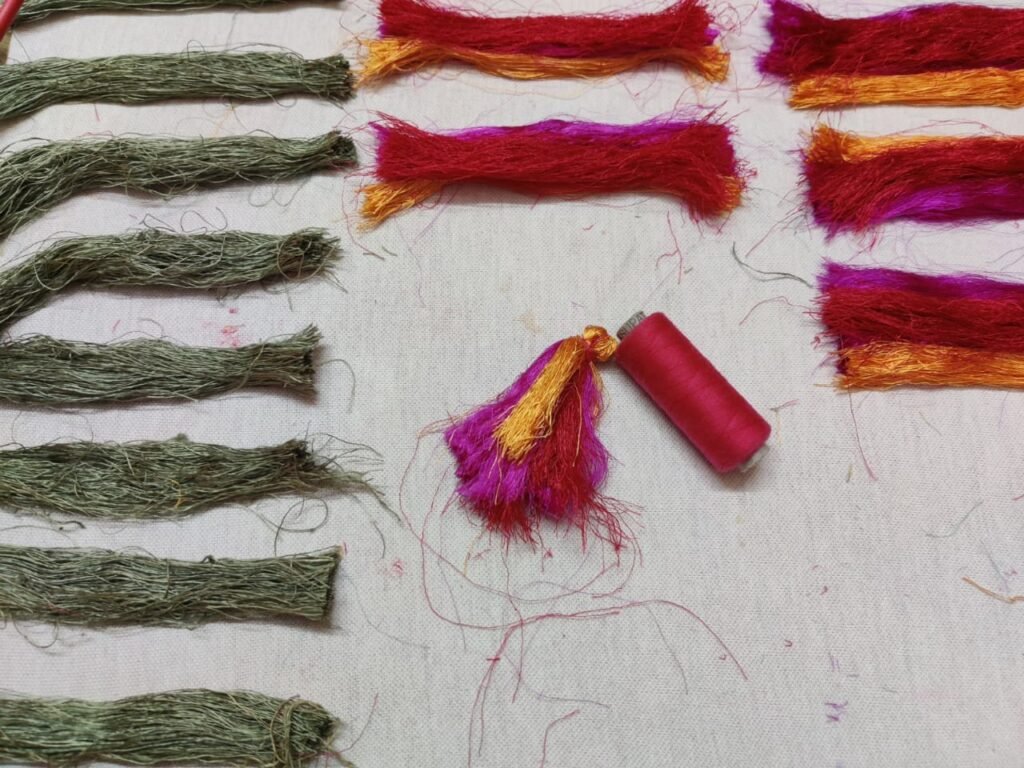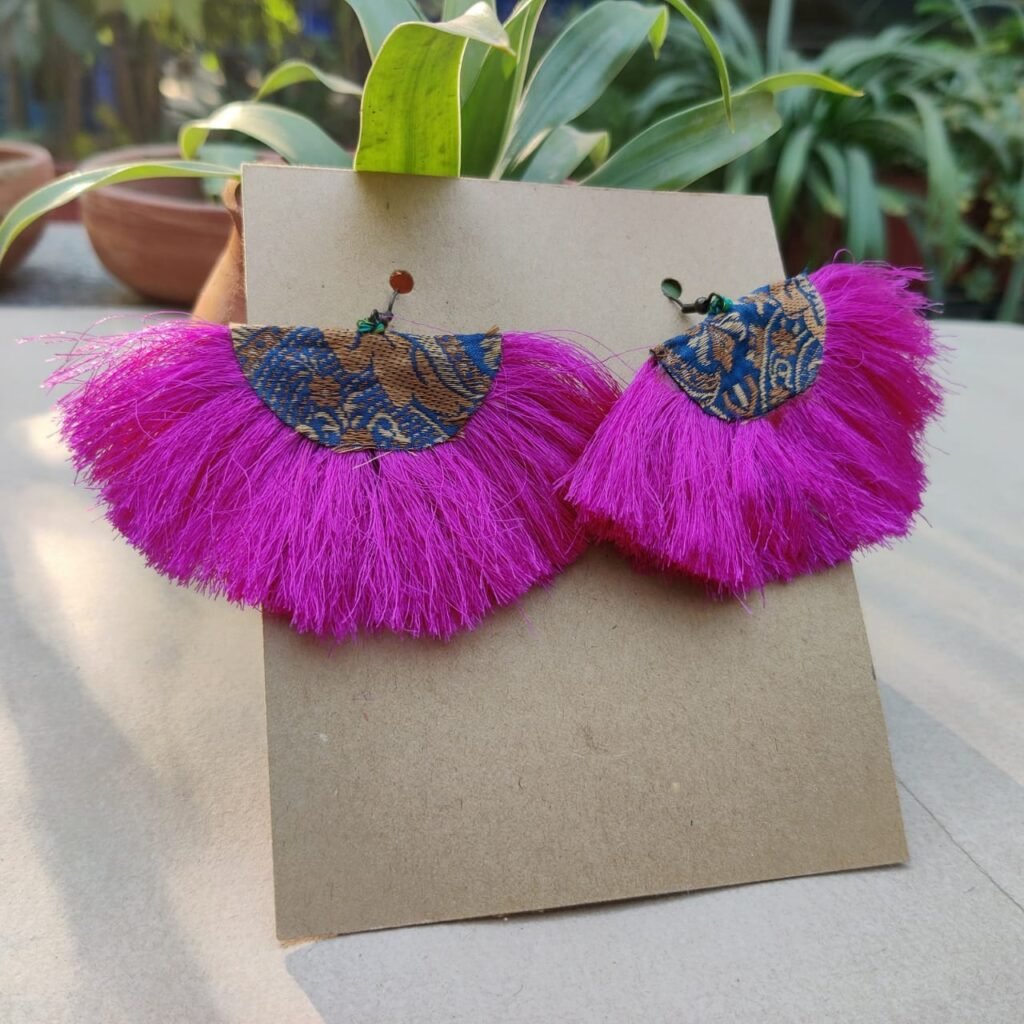Kosala Livelihood and Social Foundation
Project Scope – Targeted group
200 Women from Chhattisgarh were mobilized and trained in Kosa silk related activities.
About Tussar Silk
Wild silk or Tussar Silk, its different names have a lot to do with its origin, for it is found in the silk worms that breed on wild forests. This art from hails from Bihar, particularly in Bhagalpur where the silk weaving industry has been going on for over a century.
A little more textured than the mulberry silk available in the market, the porous fabric makes these an ideal choice for Indian summers. These sarees also have a tinge of gold in them irrespective of the colour, which is largely appreciated by women as their choice of wedding attires.
What originally was practiced as weaving silk out of cocoons, today has become a fabric of mechanization.
Tussar Silk sarees are a big hit for festive seasons, the comfort and the mild gold radiance.
This continues to be one of the art forms which the artisans of the respective region, continue to pursue as a profession. To encourage the cultural legacy of we have a wide variety of Tussar Silk sarees listed.
We even used the precious left over yarn to upcycle products like earrings, dreamcatchers, decorative items, diya holders etc.




Project Outcome
- The project’s aimed to promote and develop Kosa silk-related sericulture and weaving activities in various clusters to support and improve the livelihood of Beneficiaries involved in Kosa silk-related activities.
- This was accomplished by creating a sustainable ecosystem and thereby improving the socio-economic condition of the beneficiaries.
- During the project, Tussar Fabric and items were created by 200 beneficiaries.
Project Funded by – Kosala Foundation













